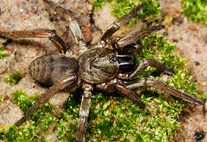Abstract
Actinia equina, the beadlet sea anemone, is a very labile species, displaying variable colour patterns, broad habitat choice and diverse modes of reproduction. Historically, studies using genetic markers such as allozymes and differences in habitat choice lead several authors to propose that different colour morphs could represent different species. One of the species defined was A. fragacea. In this paper, the relationships between brown, red and green colour morphs of A. equina and A. fragacea were studied, using two DNA fragments (one mitochondrial and one nuclear). Individuals were sampled from three different areas in Portugal separated by a maximum distance of 500 km. This is the first study applying direct sequencing of selected gene fragments to approach the validity of Actinia morphs as different genetic entities. The results show that, at least in the Portuguese coast, these colour morphs do not correspond to the two valid species recognized in the literature. The existence of cryptic species is discussed.

